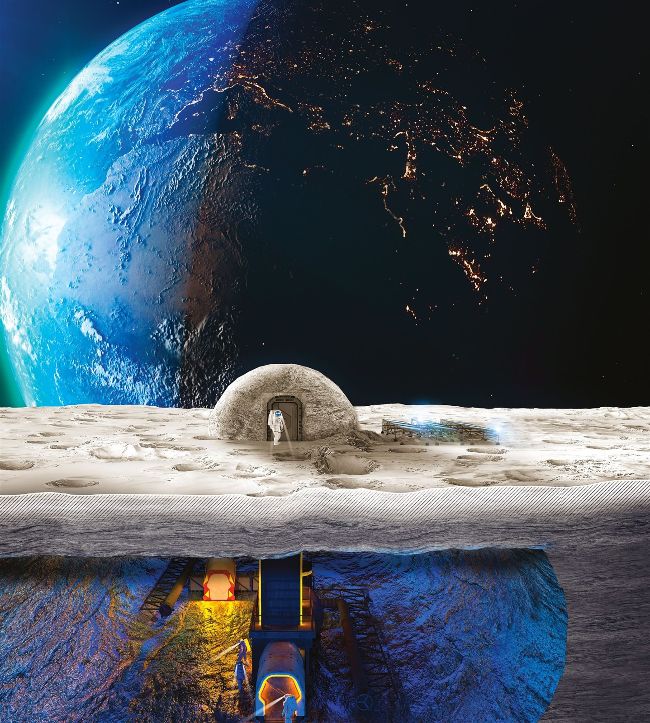EXPLORING THE MOON’S CAVES
Earth’s rocky neighbour is home to a network of unexplored caves, and scientists are keen to take a peek inside
WORDS SCOTT DUTFIELD

An artist’s illustration of astronauts using caves as a lunar research base
DID YOU KNOW?
Each year, the Moon moves around 3.8 centimetres away from Earth
A
cross the surface of the Moon, there are as many as 200 dark
pits that lead to networks of lunar caves that formed billions of years
ago. After a Mars-sized rock plummeted into the still-forming Earth around 4.6 billion years ago, pieces of rocky ejecta formed what we now know as the Moon. Up until around 2 billion years ago, our natural satellite was a much more turbulent place, facing constant meteorite bombardment and widespread volcanism. A consequence of this volcanic period was the formation of a network of lunar caves beneath the surface, which scientists have only recently discovered. Unlike the many different caves formed on Earth, the rock in the lunar caves hasn’t been carved by erosive forces such as wind and water. Instead, during its volcanic phase, lava flows created long, cavernous structures beneath the surface, much like lava tube caves found on Earth.